The home building industry is constantly evolving, influenced by economic conditions, technological advancements, regulatory changes, and shifting consumer preferences. As we move into 2024, several trends are emerging that present both challenges and opportunities for builders, developers, and homeowners. This article explores the key challenges facing the home building industry in 2024 and how they are shaping the future of residential construction. Here are the trends in challenges for home building in 2024. For more details, talk to experts through consulting services.
Supply Chain Disruptions
The global supply chain continues to face significant disruptions, affecting the availability and cost of building materials. These disruptions are driven by factors such as geopolitical tensions, natural disasters, and ongoing impacts from the COVID-19 pandemic.
- Impact: Builders face delays in project timelines and increased costs for materials like lumber, steel, and concrete. The scarcity of key components can stall construction projects and strain budgets.
- Response: Builders are seeking alternative suppliers, diversifying their supply chains, and investing in bulk purchasing agreements to mitigate these disruptions. Additionally, some are turning to local materials and innovative construction techniques to reduce dependency on global supply chains.
Labor Shortages
The construction industry has been grappling with labor shortages for several years, and this trend is expected to continue in 2024. A significant portion of the workforce is nearing retirement, and there is a lack of new entrants to fill the gap.
- Impact: Labor shortages lead to increased labor costs, project delays, and a reduction in the quality of work due to the reliance on less experienced workers.
- Response: To address labor shortages, companies are investing in workforce development programs, partnering with vocational schools, and offering competitive wages and benefits to attract and retain skilled workers. Automation and robotics are also being explored to supplement the labor force and improve efficiency.
Rising Costs and Affordability Issues
The rising cost of materials, labor, and land continues to drive up the overall cost of home construction, exacerbating affordability issues for many potential homebuyers.
- Impact: Higher construction costs make it challenging for builders to deliver affordable housing, leading to a widening gap between supply and demand in the housing market.
- Response: Builders are exploring cost-saving measures such as modular and prefabricated construction, which can reduce labor and material costs. Additionally, there is a push for innovative financing solutions and public-private partnerships to support the development of affordable housing.
Regulatory and Environmental Challenges
Increasingly stringent building codes and environmental regulations are adding complexity to the home building process. These regulations aim to improve energy efficiency, reduce carbon footprints, and ensure safer building practices.
- Impact: Compliance with new regulations can lead to higher upfront costs and longer approval processes, potentially delaying projects.
- Response: Builders are investing in training and education to stay abreast of regulatory changes. Adopting green building practices and energy-efficient technologies can not only ensure compliance but also appeal to environmentally conscious consumers. Some builders are also advocating for streamlined regulatory processes to facilitate faster project approvals.
Technological Advancements
The integration of technology in home building is transforming the industry, but it also presents challenges related to adoption, costs, and training.
- Impact: While technology can improve efficiency and quality, the initial investment and the need for skilled workers to operate new systems can be barriers.
- Response: Builders are gradually incorporating technologies such as Building Information Modeling (BIM), 3D printing, and smart home systems. Emphasizing ongoing training and partnering with tech companies can help overcome adoption challenges and realize the benefits of technological advancements.
Changing Consumer Preferences
Homebuyers’ preferences are evolving, with a growing demand for flexible living spaces, home offices, and sustainable features. These changing preferences require builders to adapt their designs and construction practices.
- Impact: Meeting the diverse needs of modern homebuyers can complicate design and planning processes, potentially increasing costs and timelines.
- Response: Builders are prioritizing flexible floor plans and multi-purpose spaces that can adapt to different needs. Incorporating sustainable and energy-efficient features is becoming standard practice to meet consumer demand and regulatory requirements.
Climate Change and Resilience
The increasing frequency and severity of climate-related events, such as wildfires, floods, and hurricanes, are forcing builders to prioritize resilience and disaster preparedness in their designs.
- Impact: Building homes that can withstand extreme weather conditions often involves higher costs and more complex engineering solutions.
- Response: Builders are adopting resilient construction techniques, such as using fire-resistant materials and elevating structures in flood-prone areas. They are also engaging in community planning efforts to enhance overall resilience and reduce the risk of damage from natural disasters.
Financing and Economic Uncertainty
Economic volatility and changes in interest rates can impact the financing of home building projects and the purchasing power of potential homebuyers.
- Impact: Fluctuations in interest rates and economic uncertainty can make it more difficult for builders to secure financing and for consumers to obtain affordable mortgages.
- Response: Builders are exploring diverse financing options, including flexible payment plans and partnerships with financial institutions, to offer more attractive terms to buyers. Keeping a close watch on economic trends and being prepared to adjust strategies accordingly can help navigate these uncertainties.
The home building industry in 2024 faces a complex landscape of challenges, from supply chain disruptions and labor shortages to rising costs and evolving consumer preferences. However, these challenges also present opportunities for innovation and improvement. By embracing new technologies, adopting sustainable practices, and prioritizing resilience, builders can not only navigate these challenges but also drive the industry forward. Staying agile and responsive to changing conditions will be key to success in the dynamic world of home building. These were the trends in challenges for home building in 2024. For more details, talk to experts through consulting services.


